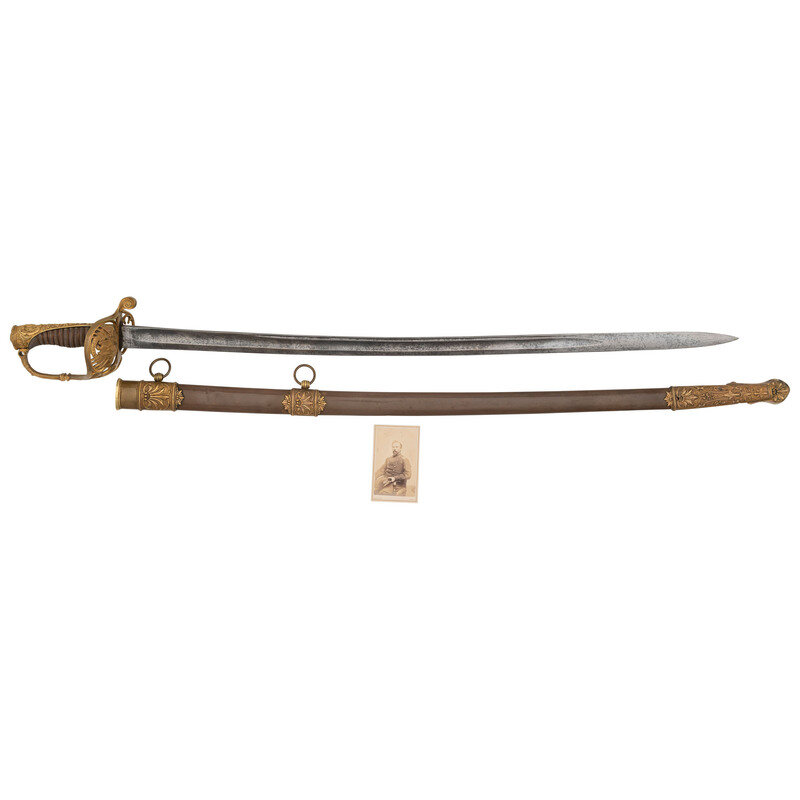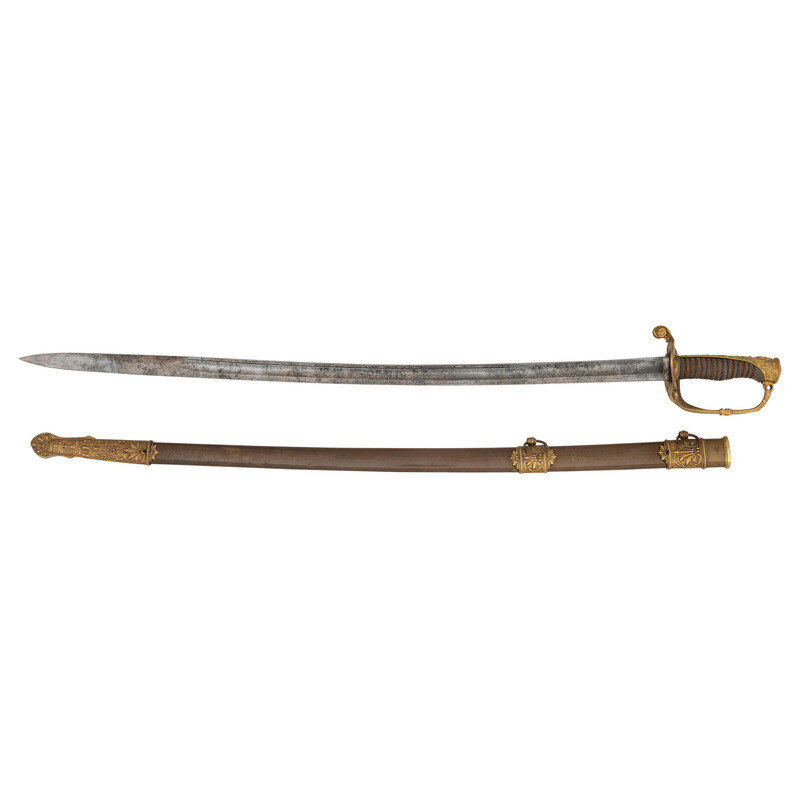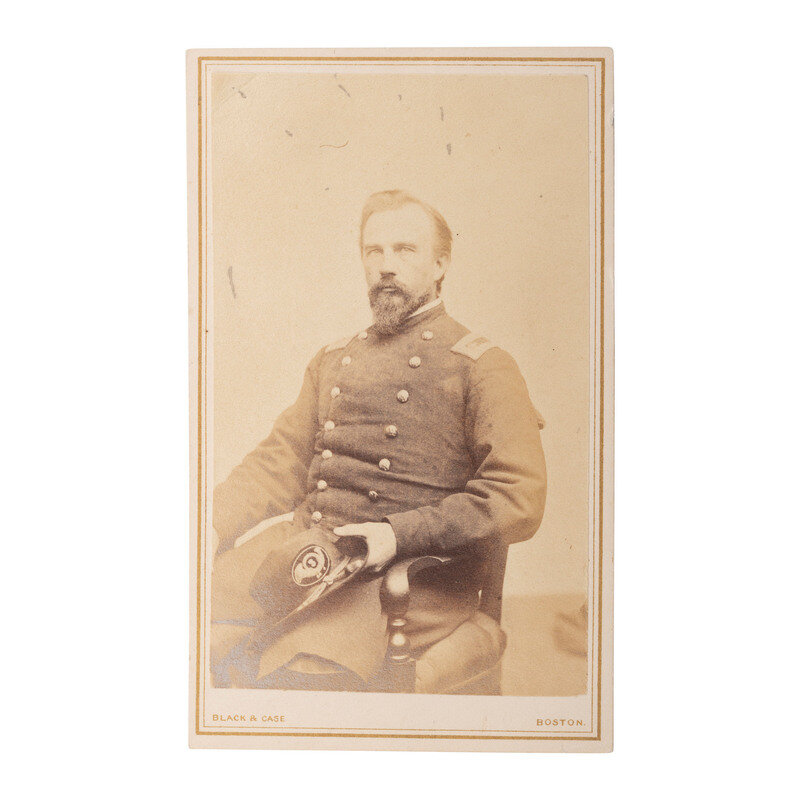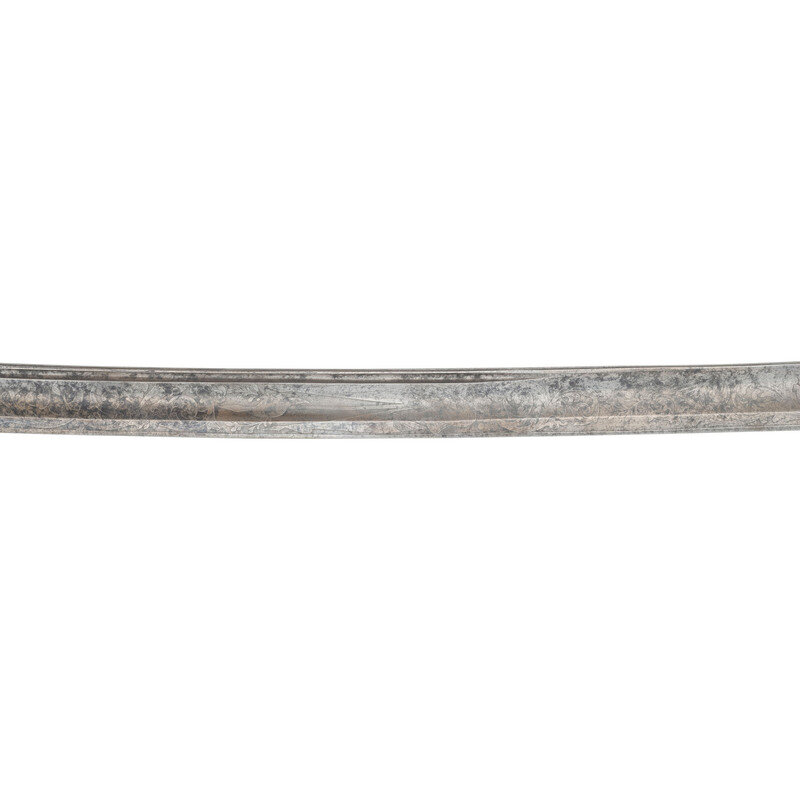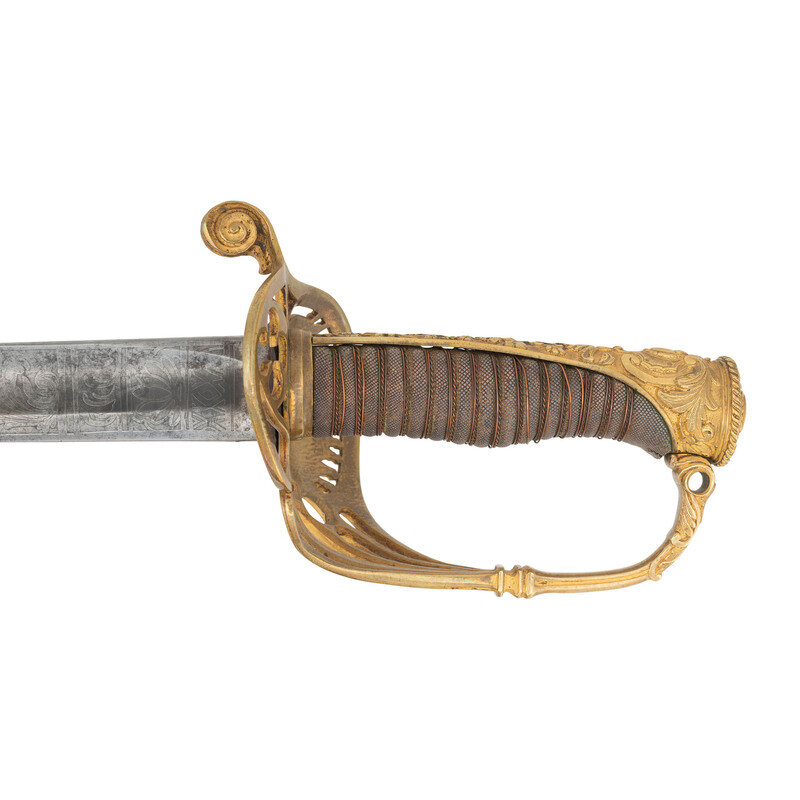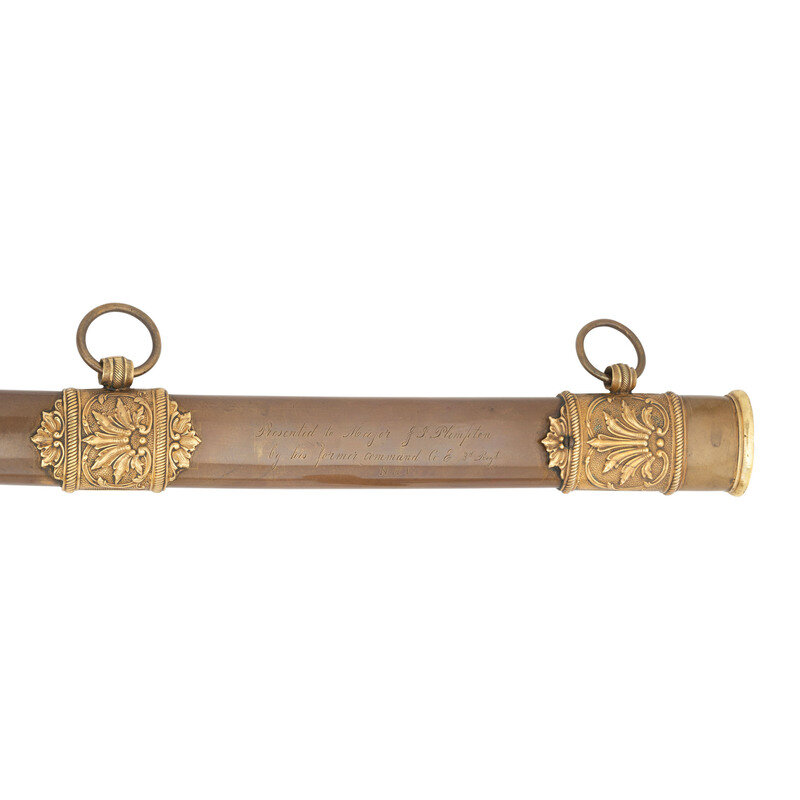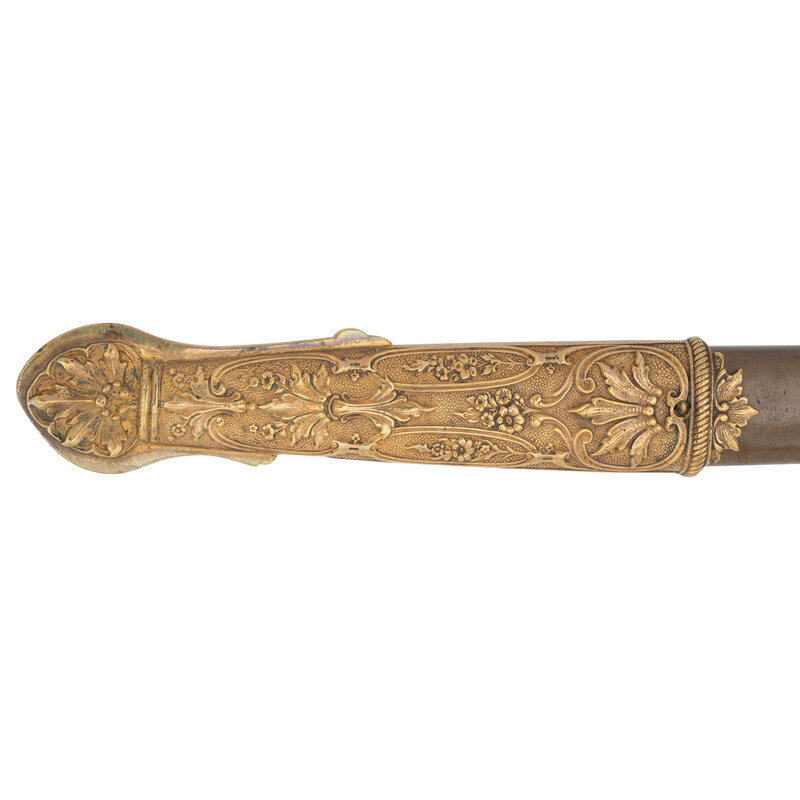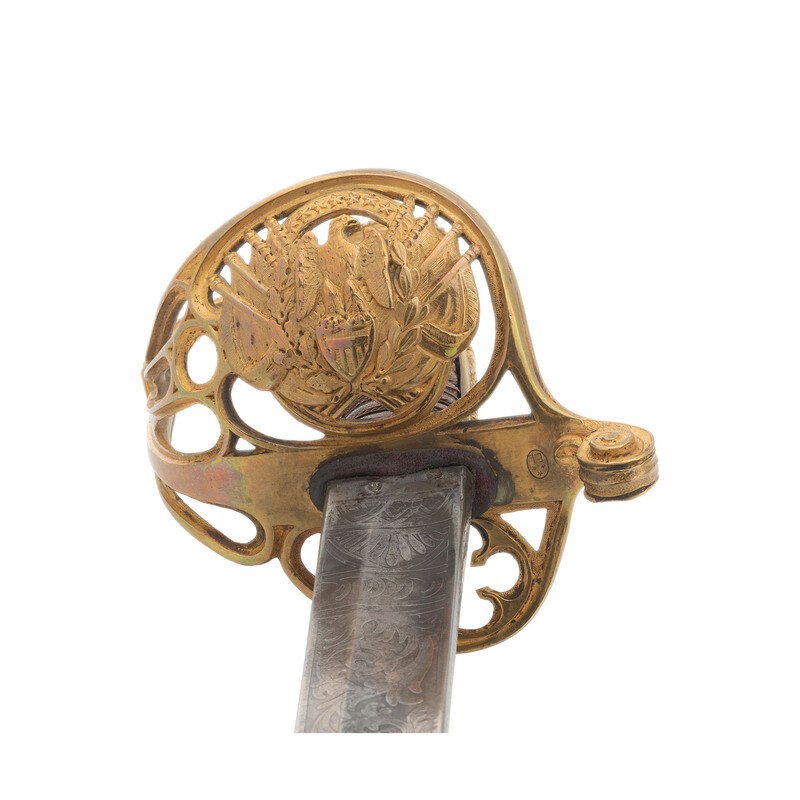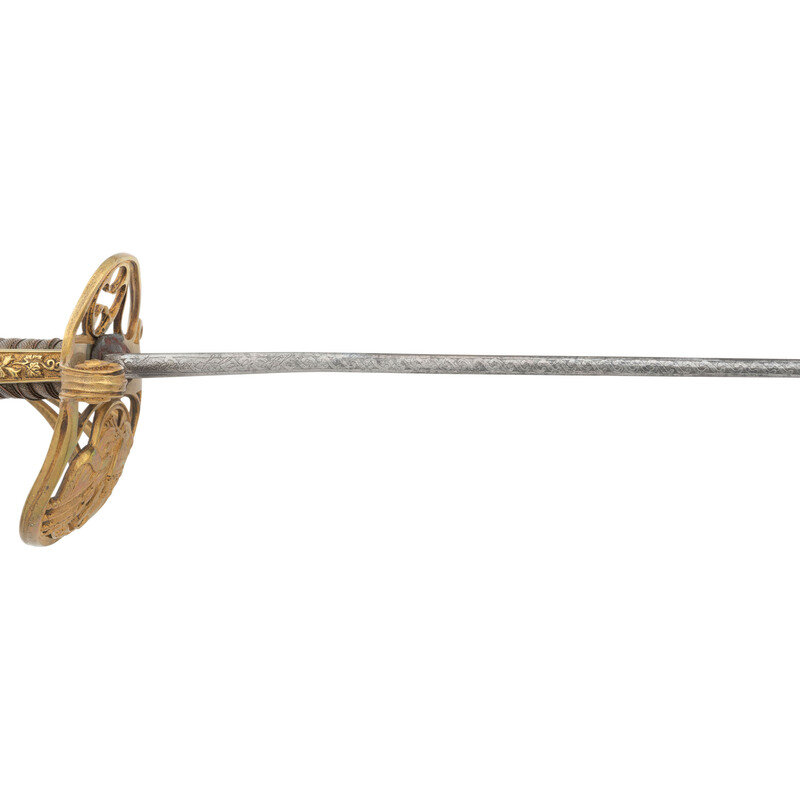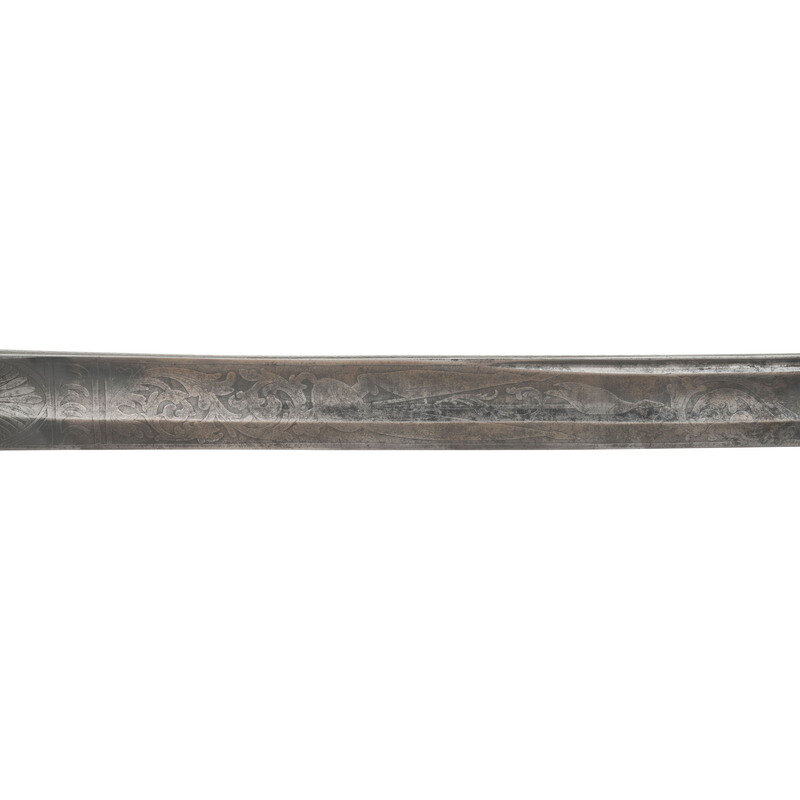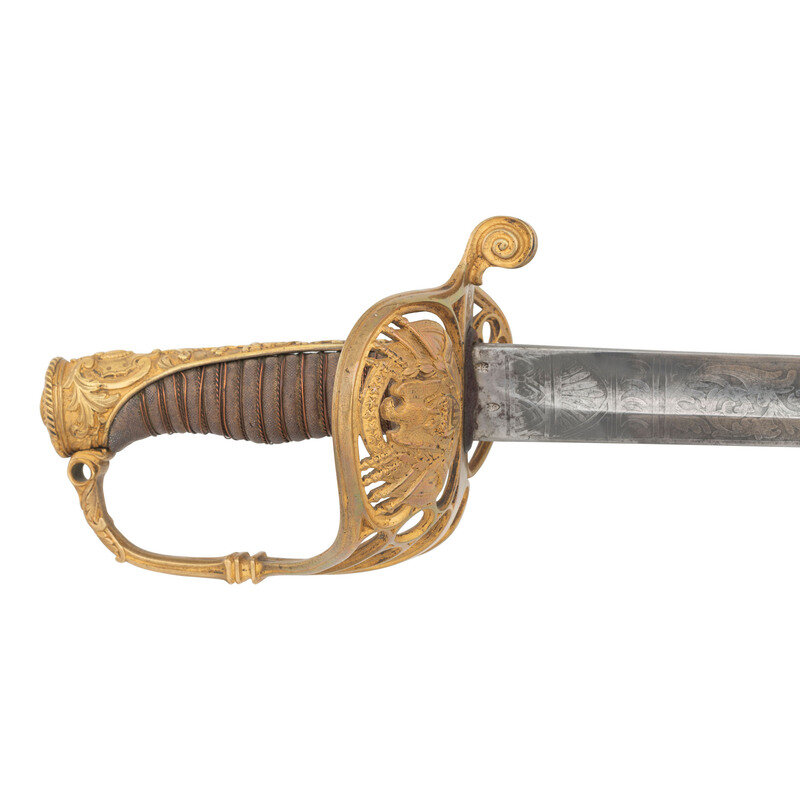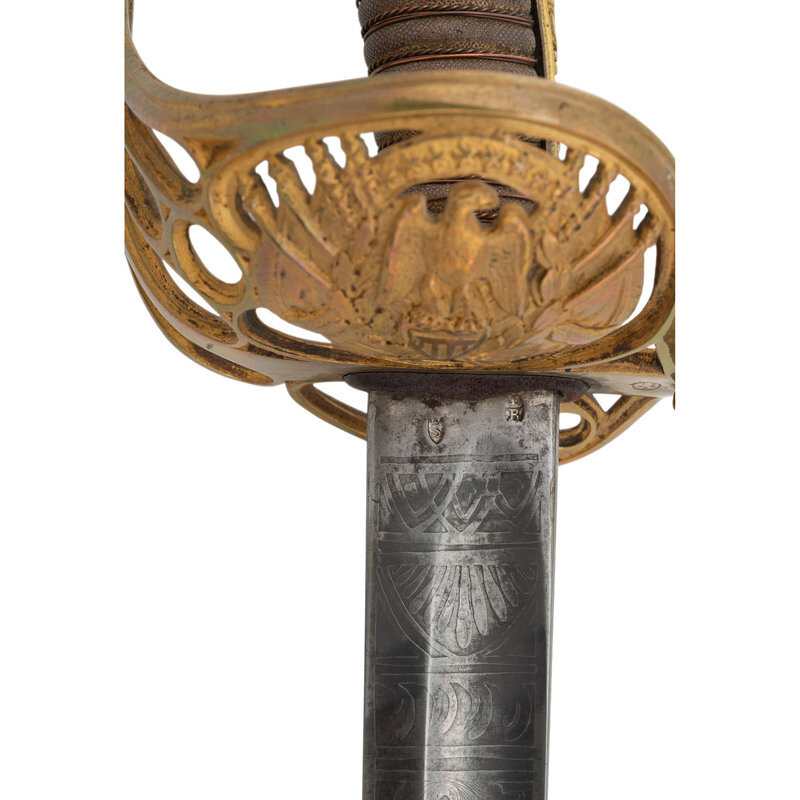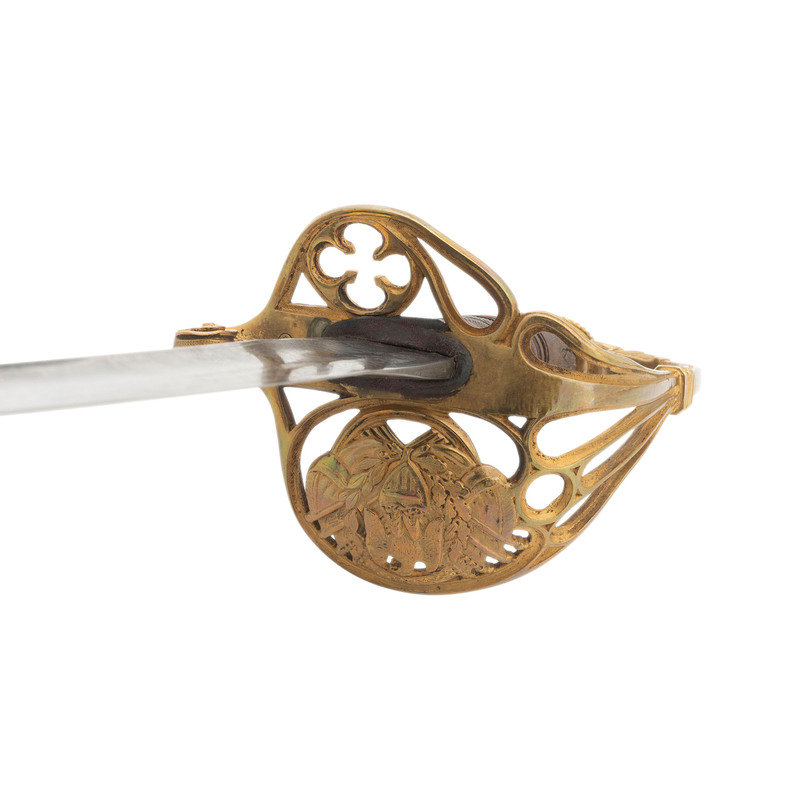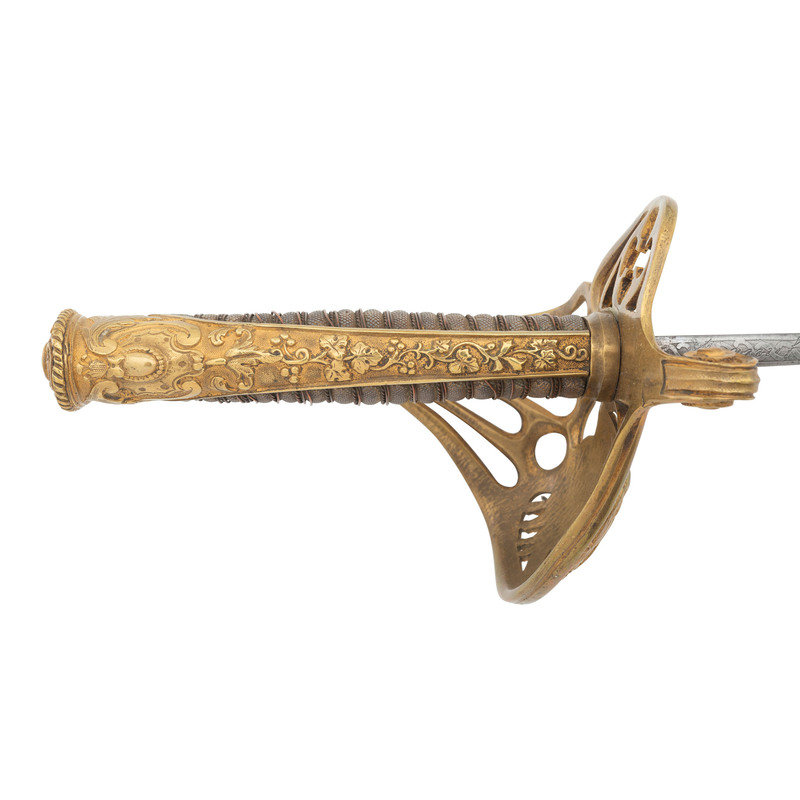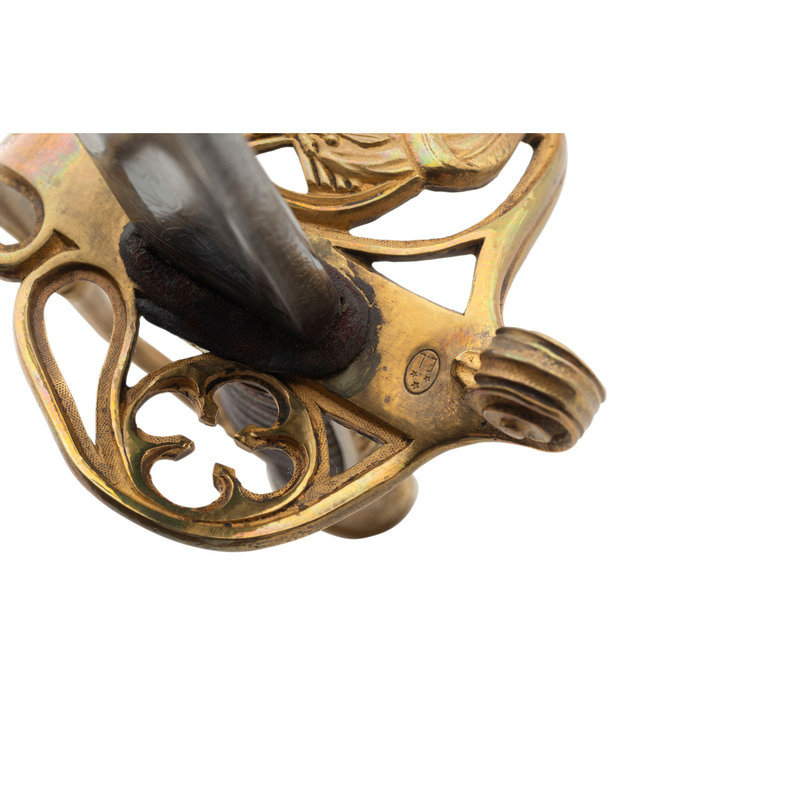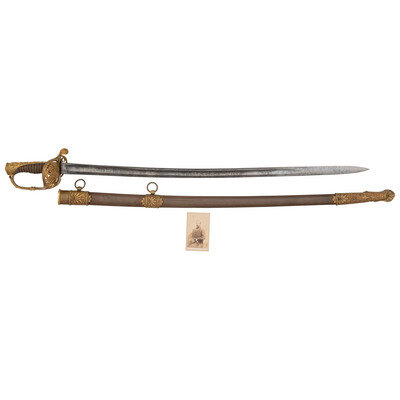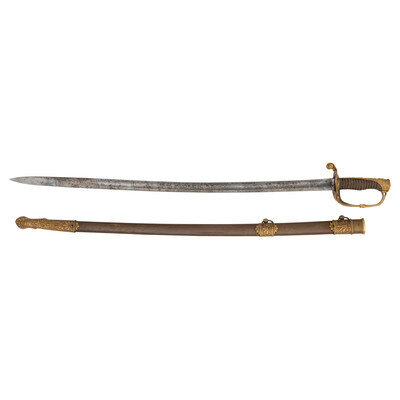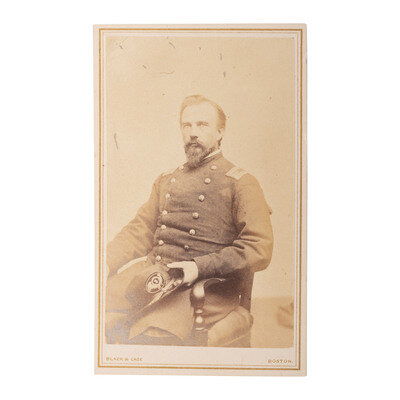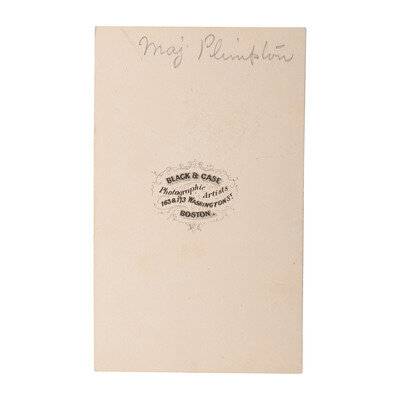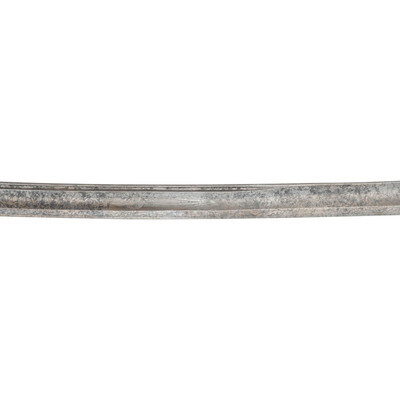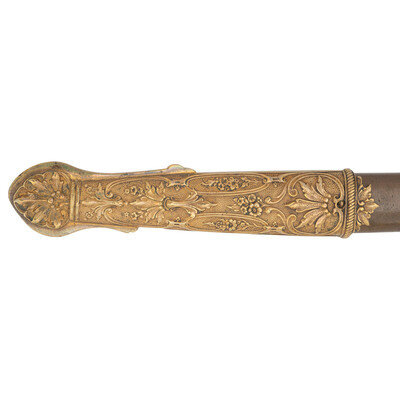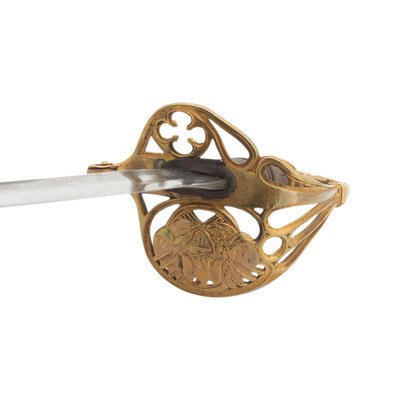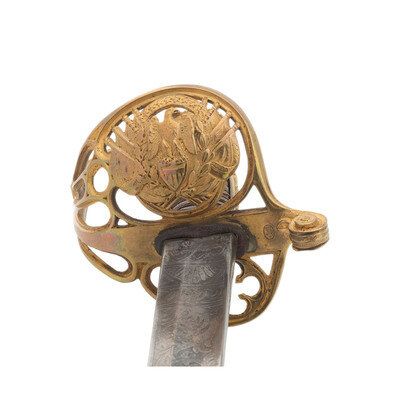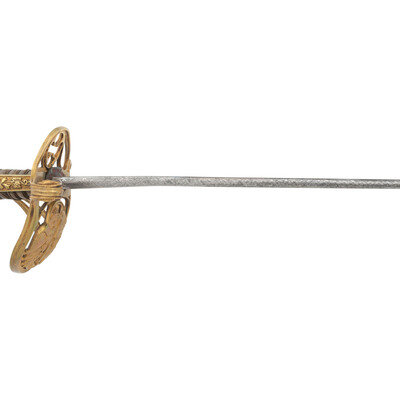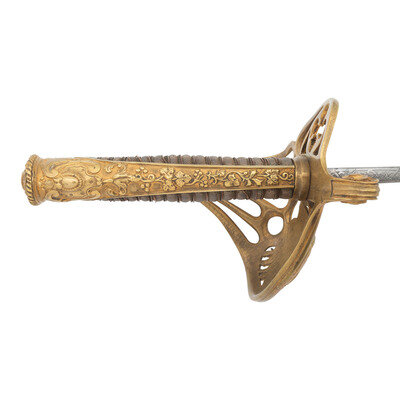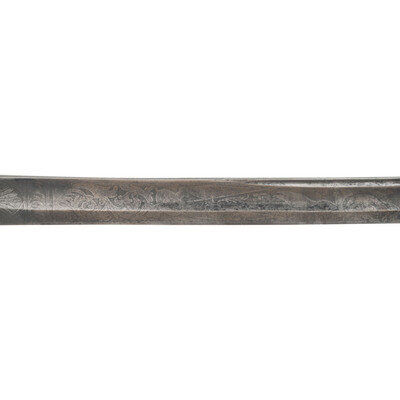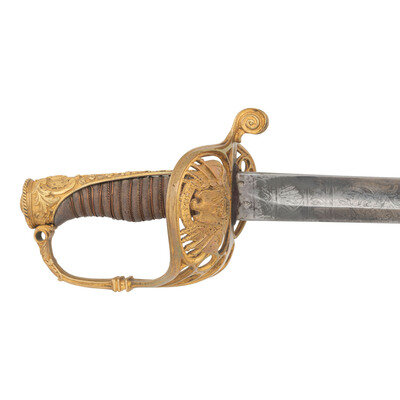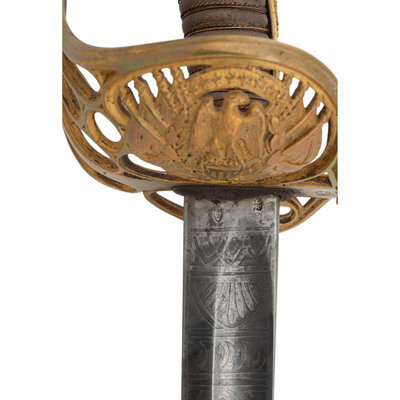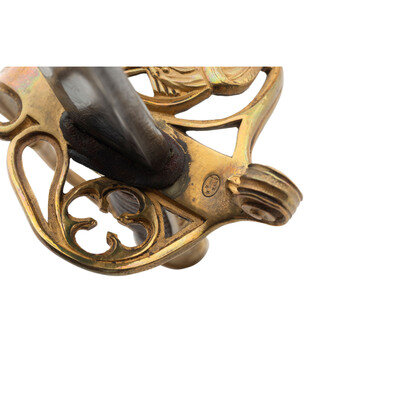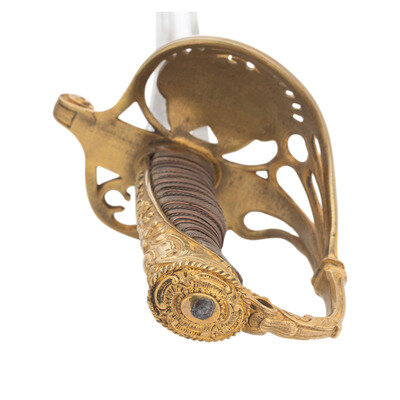Condition Report
Contact Information
Auction Specialists
Lot 23
Lot Description
31.5" slightly curved single-edged spear point blade with 24" unstopped median fuller and a narrow 16.5" long fuller along the spine. Blade 1.125" wide at the ricasso and 37" in overall length. Gilt brass hilt of French pattern with a spread-winged American Eagle in the face of the guard. Deep relief cast and chiseled decorations, rococo pommel cap, deep relief backstrap with a grooved wood grip covered in shagreen with fourteen wraps of multi-strand wire. A nearly identical hilt is shown on an Evans & Hassell presentation sword on page 421 of Thillmann's Civil War Army Swords. Blade with a raised S in a depressed shield and a raised crowned-B in depressed oval on the obverse near the ricasso. No maker's or retailer marks are present. Blade with 18" etched panels with flowing foliate designs, a trophy of arms as the central panel on the reverse and panoplies of arms on the obverse. Sword is accompanied by its browned brass scabbard with gilt deep relief cast brass mounts, with the heavily chiseled drag missing its mounting screws. The reverse of the scabbard is engraved between the mounts Presented to Major J I Plimpton/by his former command Co E 3rd Regt/NHV. A CDV of Plimpton seated in his major's uniform with an embroidered officer's hat insignia with a number "3" in it, is included with the sword.
James Ingals Plimpton (1826-1864) was born in West Cambridge, MA on December 27, 1826. He was trained as a cabinet maker and piano forte finisher. He moved to Milford, NH for a while but returned to the Boston area to work for the piano makers Brown & Allen and would eventually spend much of his working life as an employee of the Chickering & Sons piano factory in Boston. In 1857 he moved his family back to Milford, but remained in the Boston area working for Chickering. When the Civil War erupted he returned to Milford and helped to raise Company E of the 3rd New Hampshire Volunteer Infantry. He initially enlisted as a private but was appointed captain of the company. He was promoted to major on June 27, 1862 and then to lieutenant colonel on April 6, 1864. The 3rd New Hampshire was raised in Concord, NH and officially mustered into service on August 23, 1861. The regiment spent most of its service in the coastal Carolinas and fought their first engagement at the Battle of Secessionville, SC on June 16, 1862. The regiment was part of the amphibious assault on Morris Island, the location of the famed Battery Wagner. The regiment was involved in both major assaults on the fort, the first of which was the backdrop for the story of the 54th Massachusetts Infantry as told in the film Glory. The regiment saw additional combat at Proctor's Creek, Deep Bottom Run and the assault on and capture of Fort Fisher. It was at Deep Bottom Run on August 16, 1864 that Plimpton was killed while rallying his troops, after breaking a Confederate line and taking some Georgian's prisoner.
The sword is accompanied by the above mentioned CDV and a large binder of research including copies of Plimpton's service records, images of him, history about him and the regiment, etc.
From the Collection of George Oldenbourg
